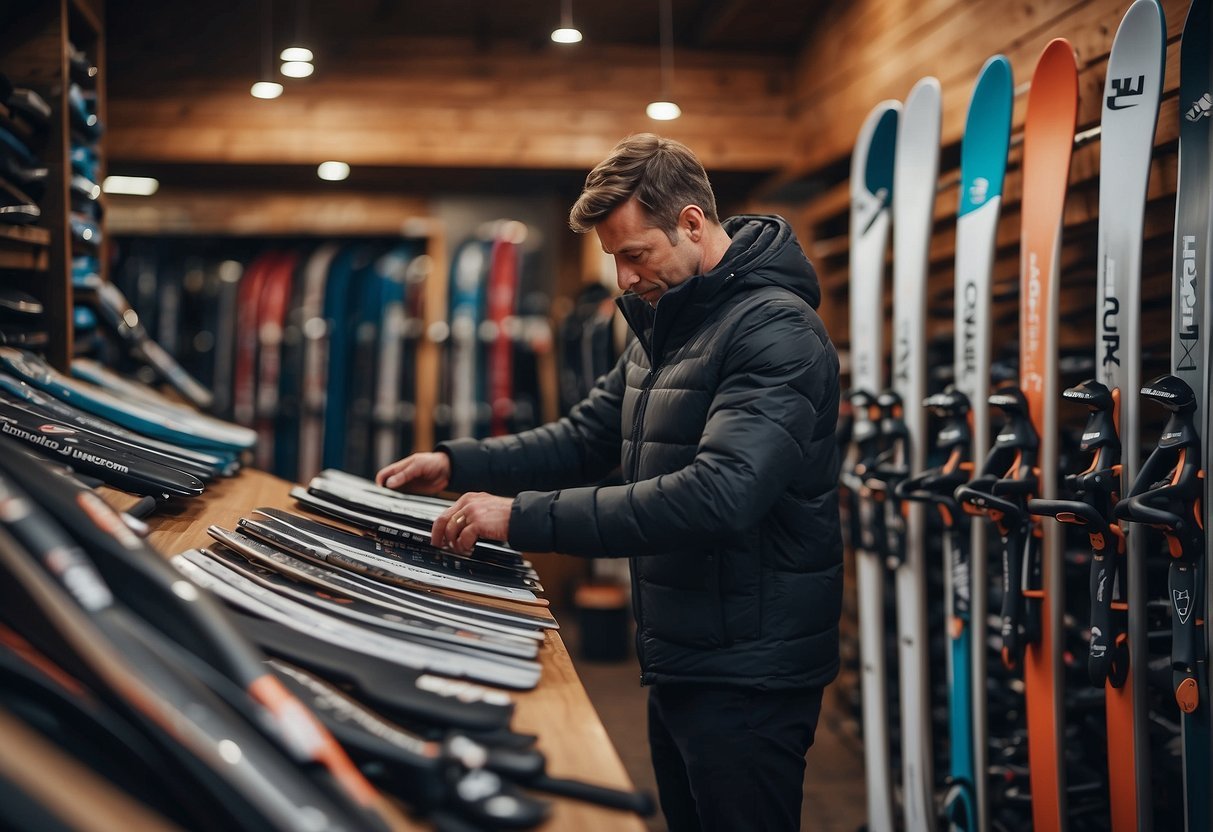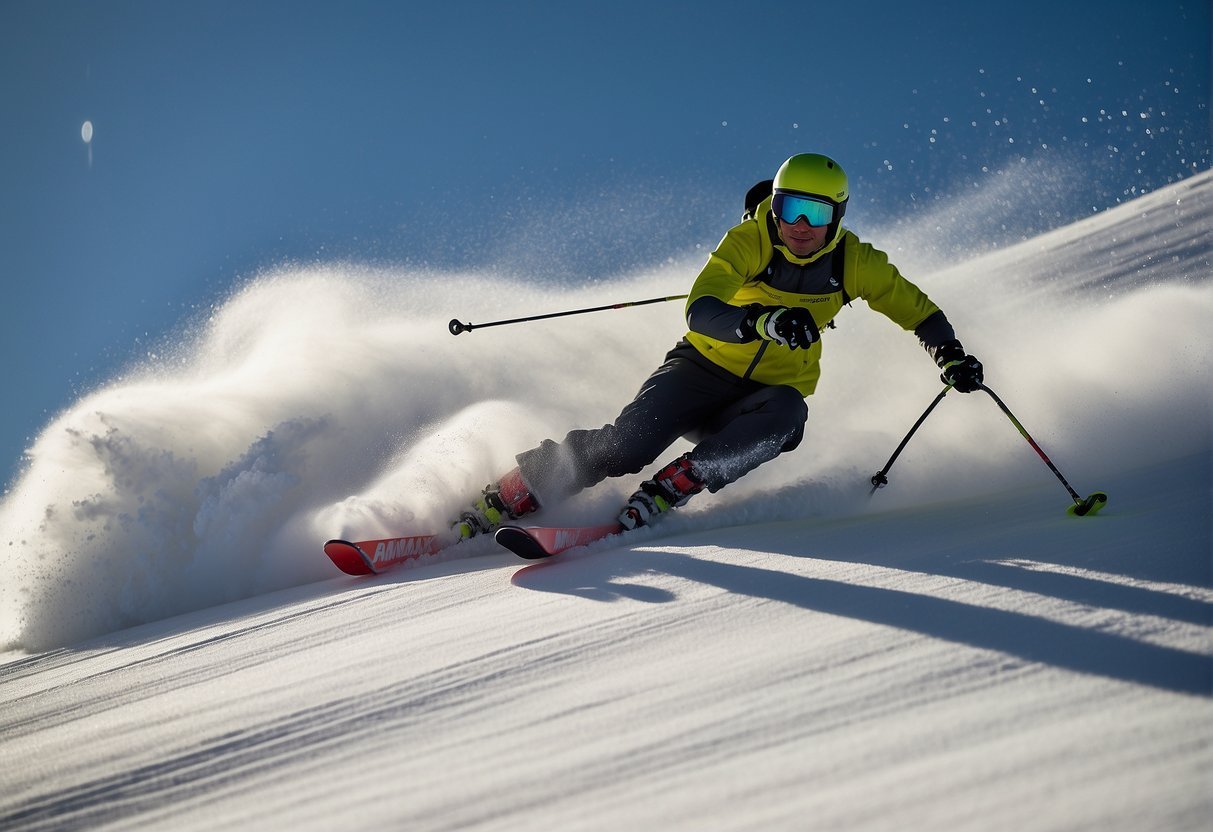أفضل الزلاجات للمبتدئين – أفضل اللقطات للمتزلجين المبتدئين
Embarking on the journey of skiing can be an exhilarating experience marked by challenges and triumphs, especially for those new to the slopes.
In 2024, manufacturers have acknowledged the diverse needs of beginner skiers with a range of skis that promise a good blend of comfort, control, and growth potential. Identifying the best beginner skis involves understanding their design features and how these can aid a novice’s progression from tentative first slides to confident, controlled skiing.

Selecting the right pair of beginner skis is crucial, as it can significantly impact a learner’s experience and تطوير المهارة. The best beginner skis typically offer a gentler flex, a more forgiving shape, and a construction prioritising ease of turning and stability.
These attributes can reduce the initial intimidation factor and help newcomers feel more secure as they navigate the fundamentals of skiing techniques.
Best Beginner Skis – Key Takeaways
- Selecting appropriate skis is essential for beginner skiers’ confidence and progression.
- The best skis for beginners fuse comfort with the capacity to advance skills.
- Understanding foundational skiing techniques is integral to the development of new enthusiasts.
Choosing the Right Beginner Skis

Selecting the right skis is critical for beginners, as it can significantly affect comfort, stability, and overall enjoyment on the slopes. This section will guide new skiers through the essential aspects of choosing skis that match their skill level and goals, ensuring a supportive and enjoyable learning experience.
Understanding Ski Dimensions and Shapes
Beginner skis often have a shape that facilitates easy turning and stability. They typically feature a narrow waist underfoot for grip on groomed pistes and a softer flex for forgiveness. The tip و tail dimensions contribute to the ski’s behaviour: a wider tip helps with turning, while a tail that’s not too wide provides a good balance between stability and playfulness.
Selecting Ski Length and Flexibility
أ shorter ski length is advised for beginners as it offers more control and easier manoeuvrability. Softer flex skis are more forgiving, making them suitable for newcomers developing their technique. A rough guide is to choose skis that come up somewhere between the chin and the nose when standing on the end.
Evaluating Ski Construction and Materials
ال بناء of a ski can vastly influence its performance. A wood core, often made from poplar wood, is a sign of quality as it provides durability and a lively feel. Foam-core skis are usually lighter and can offer a gentler introduction to skiing, but they may lack the power و استقرار of wood-core skis.
Identifying Suitable Bindings
Bindings are crucial for both safety and control. For beginners, it’s essential to get bindings that will release quickly during a fall to prevent injury. Entry-level options like Xpress 10 GW bindings أو M10 GW bindings offer sufficient أداء و control without being overly complex.
Factoring in Price and Brand
ال سعر of beginner skis can vary, with reputable brands such as K2, Head, Rossignol, Atomic, Salomon, و Blizzard offering options that cater to a range of budgets. Investment in beginner skis should be based on balancing cost-effectiveness and the potential for skill growth and development.
Deciding on All-Mountain Versus Specialised Skis
All-mountain skis are designed to handle a variety of terrain, from groomers to light powder. They are the most versatile option for beginners who want to explore different aspects of skiing. However, if a beginner knows they will stick primarily to piste skiing, a more specialised ski that excels on groomed runs might be preferable.
Understanding Skiing Fundamentals and Techniques

To master skiing, مبتدئين must grasp essential techniques and progressively tackle varied terrains and conditions while selecting appropriate gear for a smooth learning curve.
Learning Basic Skiing Techniques
Beginners should start with a snowplough position, which involves angling the ski tips together in a ‘V’ shape to control speed. Graduating from the snowplough, they learn to carve turns – a manoeuvre where the skis bend into the arc of the turn, maintaining edge contact with the snow. Practice and balance are crucial to keep skis parallel and enhance control.
Progressing from Beginner to Intermediate
The transition from beginner to intermediate status is marked by a skier’s ability to execute consistent parallel turns and maintain balance through various turning techniques. A responsive ski, such as models from Volkl with a poplar wood core, can aid in refining these skills. Investing in beginner-friendly skis that offer room for growth, like the Blizzard Thunderbird SP 7.2, is beneficial as skiers progress.
Adapting to Varying Ski Conditions
Skiers need to adapt their technique to different snow conditions. On groomed trails, or ‘corduroy,’ carved turns are optimal, whereas a rocker profile helps with flotation in soft snow. When confronted with uneven snow or moguls, adjusting body position and weight distribution is necessary.
Table: Ski Condition Adaptations
| حالة | Technique Adjustment |
|---|---|
| Soft Snow | Use a rocker for flotation |
| Corduroy | Focus on carving turns |
| Moguls | Absorb bumps with knees |
Exploring Different Ski Terrains and Challenges
Skiing diverse terrains, such as groomed trails, moguls, and tree-lined paths, builds experience. Those keen on freestyle can opt for freestyle-oriented skis, while assertive skiers might challenge themselves on steeper slopes. Ski resorts often provide a collection of routes to suit varying abilities.
Selecting Ski Apparel and Accessories
Finally, choosing the right apparel and accessories ensures comfort and safety on the slopes. High-quality ski boots and bindings are pivotal for good foot support and ski control. Beginners should consider rental skis or entry-level packages, including beginner-friendly skis designed for an athletic yet approachable introduction to the ski industry.






